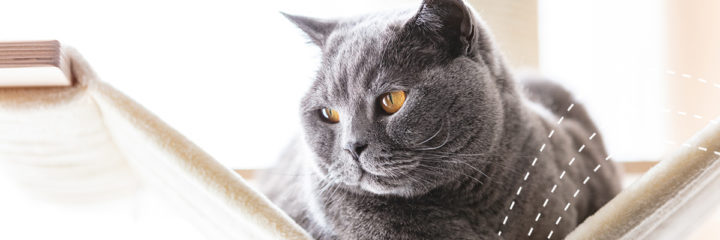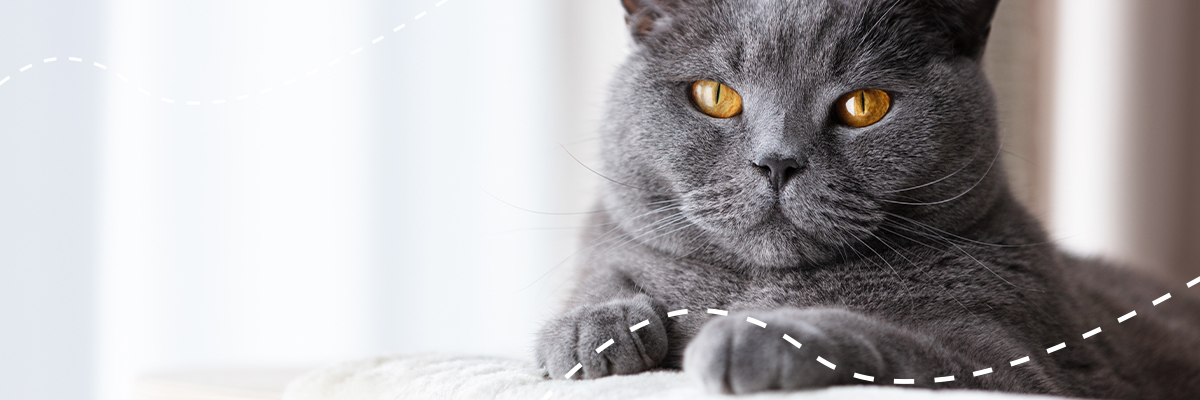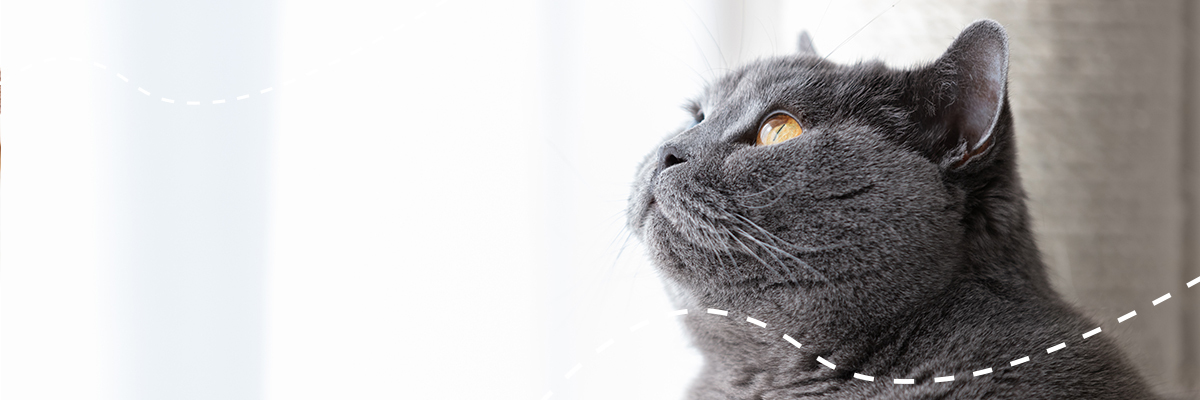
Summary
- IRIS stage 4 corresponds to the end stage of chronic kidney disease
- The last days of life should be made as comfortable as possible for the cat
- The own needs must not be left out
The end stage of Chronic Kidney Disease in the cat (and dog) corresponds to stage 4 according to IRIS.
The IRIS (International Renal Interest Society) divides Chronic Kidney Disease (CKD) into four stages. The respective stage corresponds to the severity of the chronic kidney disease and is also related to the prognosis. IRIS recommends specific treatments and procedures depending on the stage.
Read here the recommendations on stage I – III
Not every cat goes through all stages perceptibly for the cat owner. Especially in stage 4, however, the health problems and impact of Chronic Kidney Disease are clearly visible. Therefore, the focus in this end stage is to alleviate the symptoms and to stabilize and, if possible, improve the cat’s quality of life. The cat’s last days of life should be made as comfortable as possible.
The average remaining survival time at this stage is 103 days. This does not mean that every cat will adhere to it. It is an average value. Despite the massive reduction of kidney function to less than 10%, some cats can still be quite lively and live a long time in the fourth stage. Mostly, cats in stage 4 are haggard and dehydrated, tired and sleepy.
Blood values deteriorate rapidly
The blood values in the kidney profile are all significantly elevated. This relates to creatinineCreatinine is a breakdown product of muscle metabolism. Its blood level is dependent, among many factors, on age, weight, nutritional status and muscle mass. Hence, creatinine levels in the blood vary from individual to individual. Creatinine is continuously excreted in the urine. Increased blood creatinine..., which is over 440 μmol/l or over 5.0 mg/dl in the IRIS-4 stage. SDMASDMA = Symmetrical Dimethylarginine, which is a degradation product of the amino acid arginine and is excreted solely through the kidneys. SDMA is a highly specific biomarker for kidney function in cats. Read more: SDMA test (blood test)... shoots up to levels above 38 ug/dl, marking the cat’s reduced renal performance to a minimum (below 10%), as does the markedly elevated ureaUrea is the nitrogen-containing breakdown product of protein metabolism. The nitrogen from the proteins is converted to ammonia in the liver, which is combined with carbon dioxide to form urea. This is continuously excreted via the kidneys but also via sweat. Urea is one of... level. Likewise, the kidneys can no longer excrete sufficient phosphate and thus increased phosphate is retained in the blood.
If kidney values are elevated, this indicates that the kidneys are no longer able to excrete metabolic waste products and toxins. As a result, these urinary substances remain in the blood, so that their concentration in the blood increases and leads to uremia. The cat shows progressive clinical signs such as severe nausea, vomiting, loss of appetite, drowsiness, emaciation and increasing dehydrationA deficit of total body water. Dehydration can be caused by excessive fluid loss, for instance via the kidneys in CKD, or by insufficient fluid intake.....
The cat is no longer able to adequately concentrate the urine (specific urine weight decreases) and therefore increasingly loses fluid through the urine. Likewise, proteins are lost from the cat’s body via the urine (proteinuriaIncreased protein in urine, leading to loss of protein. Normally, only a very small amount of protein is excreted in the urine. In chronic kidney disease, the amount lost may increase. High blood pressure damages blood vessels in the nephrons making them more permeable and...).

Prevent phosphate accumulation
The reduced excretion of phosphate results in an increase in the phosphate blood level. This increase is called hyperphosphatemia. It supports the vicious circle of kidney destruction and leads to clinical symptoms. Therefore, special emphasis is placed on phosphate reduction in end stage therapeutic measures. Blood phosphate levels should be maintained at <1.9 mmol/L.
Phosphate reduction can be achieved once through feeding. The logic behind is: feeding less phosphate means less phosphate in the blood. Since much phosphate is found in meat, plant proteins (such as wheat gluten) are used in dietary feeds in this case. Instead or additionally, phosphate binders can be used, which bind phosphate in the intestine and are then excreted with the cat feces. The bound phosphate can then not be absorbed into the blood. This has the effect that especially cats that eat poorly can stay on their favorite food in stage 4. The phosphate level can nevertheless be reduced by adding phosphate binders to the food.
Uraemic toxins – the body destroys itself
Likewise, uraemic toxinsToxic, nitrogen-containing urinary substances responsible for uraemia and kidney damage.... (which are also urinary substances) from protein metabolism are no longer sufficiently excreted by the kidneys. They therefore accumulate in the blood (uraemiaA raised level in the blood of urea and other urinary substances, which in chronic kidney disease can no longer be adequately excreted due to impaired renal function (glomerular filtration rate). This leads to renal damage due to uraemic toxins, toxic urinary substances The symptoms...) and organs. The cat’s chance of survival deteriorates. Uraemic toxins are substances that are harmful to the kidneys and other organs, regardless of their concentration in the blood. They destroy the functional tissue of kidneys and other organs such as brain, heart, but also muscles and many more. Uraemic toxins are involved in the progression of chronic kidney disease through many processes (hyperphosphataemiaIncreased phosphate in the blood., anaemia, high blood pressure, muscle atrophyWasting away of tissue, a reduction in the volume and/or size of tissues or organs....).
Uraemic toxins are a breakdown product of essential amino acids. They are produced by the breakdown of these amino acids by natural intestinal bacteria in the cat’s large intestine. Uraemic toxins – especially indoxyl sulphate – shorten the cat’s lifespan and severely impair its quality of life. They are essentially responsible for many of the clinical symptoms in IRIS stage 4.
Prevent accumulation of uraemic toxins
However, the accumulation of uraemic toxins in the blood can be directly influenced – unlike creatinine and urea. Similar to phosphates, the origin of these toxins is addressed. Either by feeding less protein (kidney diets are low in protein and phosphate) from which these uraemic toxins are formed. Or the precursors of these uraemic toxins are picked up at the site of their formation in the large intestine via a “uraemic toxin binder” and removed via the faeces. Nowadays, there is a highly specific “U-tox” binder for cats (Renaltec®), which acts like an oral dialysis for the cat.
Oral dialysis as a treatment option
Dialysis removes toxins from the blood. By not creating these toxins in the first place during oral dialysis, the blood is “preserved” from these uraemic toxins. Uraemic toxins that have already accumulated in the cat’s body can then pass from the organs into the blood and be excreted via the kidneys, albeit at a significantly reduced level. This improves the clinical signs and thus the quality of life of the cat. Cats start eating again and become more active.

Quality of life is the most important thing in end stage CKD
The cat’s quality of life is at the centre of CKD stage 4. The remaining lifetime should be made as comfortable as possible for the cat. This also applies to feeding. The cat should be encouraged to eat. This can be achieved by warming their food or giving them their favourite food – even if it is high in phosphates and protein.
More important than the rigid insistence on a particular (diet) food is that the cat eats at all. Without sufficient protein intake, the cat digests its own muscles. This worsens the overall condition and increases creatinine levels (creatinine comes from muscle metabolism). The cat needs to keep its strength up. To do this, it is sometimes necessary to give fluids and food through a stomach tube. Medication can stimulate the appetite. The above-mentioned oral dialysis (with Renaltec®) sometimes reduces the nausea and bad breath, which stimulates the appetite for food. It is better to give several small portions throughout the day if the cat is not very hungry. Cats are “snackers” and naturally satisfy their hunger with about 12 small snacks a day.
The cat should consume enough fluids because otherwise it will dry out due to the massive loss of water through urine. Here it may be necessary to inject the cat with fluid depots under the skin. Self-intake of food and water is preferable in any case. There are also ways to increase the intake of fluids (→ Management of the water balance).
Pay attention to your own needs
Despite all measures, the cat will deteriorate. The impending death of the cat can trigger a massive emotional crisis for the owner. A cat with chronic kidney disease requires a lot of patience and sometimes a high frustration tolerance when measures and tricks do not work. In addition, the daily care of the cat is time-consuming and also cost-intensive. Trade-offs have to be made here, which can put an emotional strain on the cat owner (→ When caring makes you shrivel). The advice of a veterinary expert, especially on prioritising measures, can be helpful.
*Since this article contains active ingredient names, I mark this article as an advertisement or ad.
Bibliography:
- Sparks, A. H. / Caney, S. / Elliot, J. / Finch, N. / Gajanayake, I. / Langston, C./ Lefebvre, H. / White, J. & Quimby, J. (2016): ISFM Consensus Guidelines on the Diagnosis and Management of Feline Chronic Kidney Disease. Journal of Feline Medicine and Surgery,18, S. 219–239.
- DiBartola, S. P. (2019): What pet owners should know about kidney function and the diagnosis and management of chronic kidney disease in dogs and cats. Im Internet unter: http://iris-kidney.com/education/what_pet_owners_should_know_ckd.html
- IRIS-Staging: http://www.iris-kidney.com/pdf/IRIS_Staging_of_CKD_modified_2019.pdf
- http://www.iris-kidney.com


